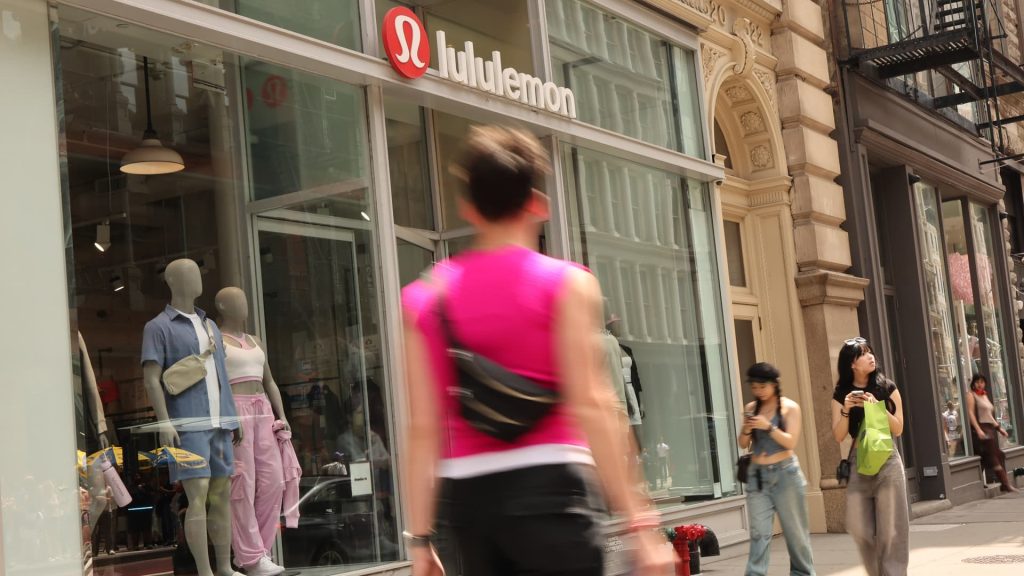Lululemon Athletica Inc. reported its fiscal first-quarter earnings on Thursday, surpassing Wall Street’s expectations. However, the company’s leadership also revised its full-year earnings guidance downward, citing a challenging macroeconomic landscape influenced by changing consumer behavior and tariff pressures. Despite the positive earnings results, stocks took a hit following the announcement, reflecting broader concerns regarding future growth amidst economic uncertainty.
| Article Subheadings |
|---|
| 1) Earnings Performance Surpassing Expectations |
| 2) Diminished Full-Year Earnings Guidance |
| 3) Tariffs Impacting Business Strategy |
| 4) Consumer Behavior and Market Trends |
| 5) Future Outlook Amid Uncertainty |
Earnings Performance Surpassing Expectations
Lululemon reported earnings that exceeded analysts’ forecast during the first quarter of fiscal 2025. The company achieved earnings per share (EPS) of $2.60, slightly above the expected $2.58. Additionally, revenue reached $2.37 billion, exceeding the anticipated $2.36 billion. These figures demonstrate Lululemon’s continued strength in the activewear market, indicating a robust demand for its products. The reported gains, however, came with caution from company executives reflecting on future economic challenges.
Diminished Full-Year Earnings Guidance
In a notable shift, Lululemon has revised its full-year earnings forecast downward, now projecting EPS between $14.58 and $14.78, a decrease from its earlier estimate of $14.95 to $15.15. This adjustment signifies heightened concerns among company leadership regarding current market conditions and consumer spending patterns. Analysts had anticipated an average EPS of $14.89, which indicates a wider disconnect between market expectations and the company’s revised outlook. This diminished guidance reflects the challenges that many retailers have been facing in today’s uncertain economic environment, often related to tariff impacts and shifting consumer behavior.
Tariffs Impacting Business Strategy
The company’s CFO, Meghan Frank, highlighted the influence of tariffs on its pricing strategy during a conference call with analysts. Lululemon is set to implement strategic price increases on select items to counteract tariff effects, which are currently weighing heavily on profit margins. The price hikes, described as modest and focused on particular products, are expected to be introduced in the latter half of the current quarter and into the third quarter. This move reflects a broader trend among retailers needing to boost prices to maintain profitability amidst increased costs associated with tariffs, especially those imposed on goods imported from China.
Consumer Behavior and Market Trends
CEO Calvin McDonald expressed concerns about the cautious approach consumers have taken when making purchasing decisions. He noted a trend where U.S. consumers are increasingly intentional with their spending, which could potentially restrain growth in the apparel sector. There was a slight increase of 1% in comparable sales year-on-year, trailing behind the anticipated 3% growth. This figure included a decline of 2% in the Americas market while international sales rose by 6%. Such dynamics serve as indicators of how shifting consumer sentiment and changing market trends are impacting retailers like Lululemon.
Future Outlook Amid Uncertainty
Despite the challenges, Lululemon remains optimistic about its future prospects. The activewear company’s confident stance is reflective of its strong brand equity and loyalty among consumers. The second-quarter revenue forecast is set between $2.54 billion and $2.56 billion, which aligns with Wall Street expectations. The company plans to navigate the current financial landscape by leveraging its advantageous position while remaining committed to investing in growth opportunities. As of now, its full-year revenue guidance is unchanged from prior projections, with analysts expecting $11.24 billion. This steadiness indicates Lululemon’s resilience, but it does not insulate the company from the greater economic uncertainties that lie ahead.
| No. | Key Points |
|---|---|
| 1 | Lululemon’s fiscal first-quarter earnings surpassed expectations with an EPS of $2.60 and revenue of $2.37 billion. |
| 2 | The company lowered its full-year EPS guidance to a range between $14.58 and $14.78, down from previous expectations. |
| 3 | Lululemon will introduce modest price increases in response to tariff impacts on select products. |
| 4 | Comparable sales rose only 1% compared to the anticipated growth of 3%, underscoring shifting consumer spending patterns. |
| 5 | Despite market challenges, Lululemon plans to continue investing in growth opportunities and maintaining its revenue forecasts. |
Summary
Lululemon’s recent fiscal first-quarter report illustrates the contrast between positive earnings performance and a cautious outlook for future growth. While the company’s ability to exceed revenue expectations showcases its strong market position, revised earnings guidance reflects the challenges posed by tariffs and shifting consumer behavior. As the company navigates these complexities, its proactive strategies may shape its resilience in an uncertain economic climate.
Frequently Asked Questions
Question: What factors influenced Lululemon’s revised earnings guidance?
Lululemon’s revised earnings guidance has been influenced by challenges related to tariffs, shifting consumer behaviors, and market uncertainties. The company’s executives have noted these factors as significant impediments to future growth.
Question: How is Lululemon planning to address tariffs and associated costs?
Lululemon plans to address tariffs by implementing strategic price increases on specific items within its assortment. These modest increases aim to mitigate the rising costs associated with tariffs imposed on imported goods.
Question: What does the future look like for Lululemon amidst economic uncertainties?
Despite current economic challenges, Lululemon remains committed to investing in growth opportunities while maintaining its revenue projections. The company expresses confidence in its strong brand equity and continues to strategize for favorable outcomes in the competitive activewear market.
